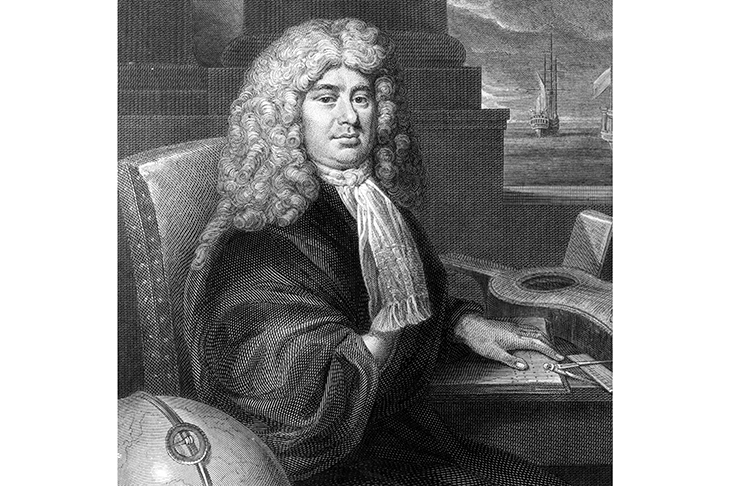A seemingly obscure battle in an ecclesiastical court could threaten the security of every historic monument in the care of the Church of England. As reported in this column last year, Jesus College, Cambridge, is trying to extirpate the memorials (while keeping the money) of its greatest historic benefactor, Tobias Rustat. Rustat was a loyal servant of King Charles II who helped him escape from the battle of Worcester, looked after him in exile, and became his Yeoman of the Robes after the Restoration. He also gave huge sums to Jesus (as to St John’s, Oxford, the Royal Hospital, Chelsea, St Paul’s Cathedral and the University of Cambridge). His sin was investing in the Royal African Company, one of whose activities was trading in slaves. The college has found it easy to take down Rustat portraits, rename Rustat feasts etc, but it is harder to fulfil its wish to remove the 14ft Grinling Gibbons Rustat memorial from the Grade I-listed college chapel. Such a move requires legal sanction — what is called ‘a faculty’ under the church equivalent of planning laws. Jesus is seeking this from the diocese of Ely. However, growing numbers of Jesuans (college alumni), many of them donors, are disturbed by their college’s campaign against its benefactor and the attack on its heritage that this involves. They love their college: they want its Fellows to pause and ask themselves whether what they are doing is wise. Last week, a 33-strong group of them, in which senior lawyers are prominent and for which a senior ecclesiastical lawyer is retained, lodged with the diocese a legal objection to the college’s application to prise the memorial off the chapel wall and stick it in a former wine cellar nearby.
The faculty system is intended to ensure that church memorials of artistic or historic importance should generally stay in place. The burden of proof that they must go rests on the petitioner, who has to show they are seriously impeding the mission of the church. It is a high bar, especially for a work of such importance and beauty, and so intrinsic to the chapel. Cherubs lift curtains to symbolise good works warding off oblivion. Delicately carved flowers at the base represent the sweetness of memory; and beneath Rustat’s bust is an inscription explaining that ‘The greatest part of the estate he gathered,/ By God’s Blessing, the King’s Favour and his Industry,/ He disposed in his lifetime in works of charity’. The objection document makes this heritage case. It adds that not only would the character of the chapel be altered by removing the monument, but that the college is trying to alter that character. ‘Fostering an inclusive dialogue and culture within the Chapel and College could not be achieved if the memorial remained within Chapel,’ the college says, though it has managed to share Christian ministry with Rustat in situ for 330 years. Indirectly, the college arguments oppose the whole idea of heritage: ‘Views about statues and memorials have been evolving fast all spring and summer’, it says, as if six months of agitation trump more than three centuries.
The Jesuan objectors do not, of course, defend the slave trade, but they give Rustat’s involvement a context. His investment was not unusual in the culture of his time. It was also marginal in his life. They calculate that, of his total worth measured by his lifetime giving and his estate at death, Rustat’s RAC holding made up 1.7 per cent. They also suggest that since in its early days the RAC failed, making money only from the late 1670s, it is likely that none of his bequests to Jesus came from slavery. He gave the money for scholarships to the college in 1671 and 1672. He probably received no RAC dividends before 1676. The objectors wonder where the ‘cancelling’ of Rustat will lead. Another investor in the Royal African Company was Samuel Pepys, who left his wonderful library and diaries to Magdalene College, a few hundred yards down the road from Jesus. Is he next?
The law rightly requires process and exactitude. The objection document finds these wanting. Given that all cases require a fair hearing, was it right that, as the Master of Jesus revealed last year, the Chancellor (top lawyer) of the diocese discussed the possible petition with the college and encouraged it? He should therefore recuse himself from the case he is supposed to judge, say the Jesuans. They express surprise that the college makes no proposals to satisfy the diocese about the future care of the displaced monument. They also raise a problem: the Rustat memorial does not belong to the college anyway. It was commissioned by Rustat himself and bequeathed to his successors, passing down (he had no children) through nephews to the Hemsted family of the present day, who are separately opposing Jesus’s petition. Did the college investigate the ownership question?
As I say, the Jesuans are looking for a solution rather than deepening division. They note that although they, the objectors, had to lodge their objection by last week, the college has still not handed in its promised petition. They wonder if the college council’s legal journey is really necessary. This feeling is strengthened by the fact that its merciless attitude to the long-dead Rustat contrasts weirdly with its tender one towards the Chinese Communist party and regime, from whose offshoots and proxies, it finally admitted last year, it has received hundreds of thousands of pounds. China has far more slave labour among the Uyghurs right now than Rustat would have traded if he had lived for a thousand years.
Readers may think it odd to devote the whole of this column to this subject, but it does matter — for education, religion, built heritage, history and the rule of law. The wrong result could encourage iconoclasm greater than any since the days of Oliver Cromwell whom Rustat resisted. The alumni group feels that all Jesuans have a locus standi in this matter and would like to hear from those interested. The email is rustatjesuscollege@outlook.com.







Comments